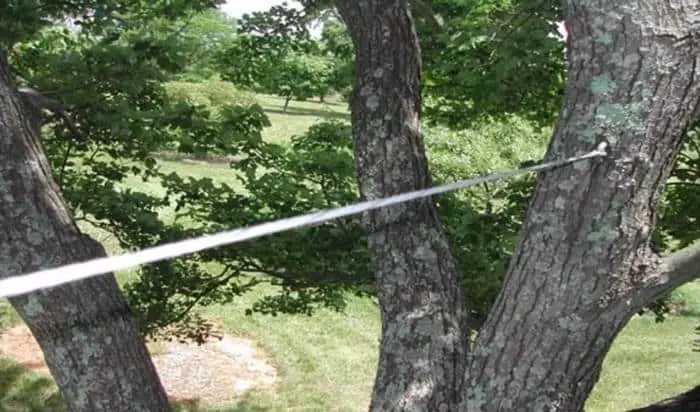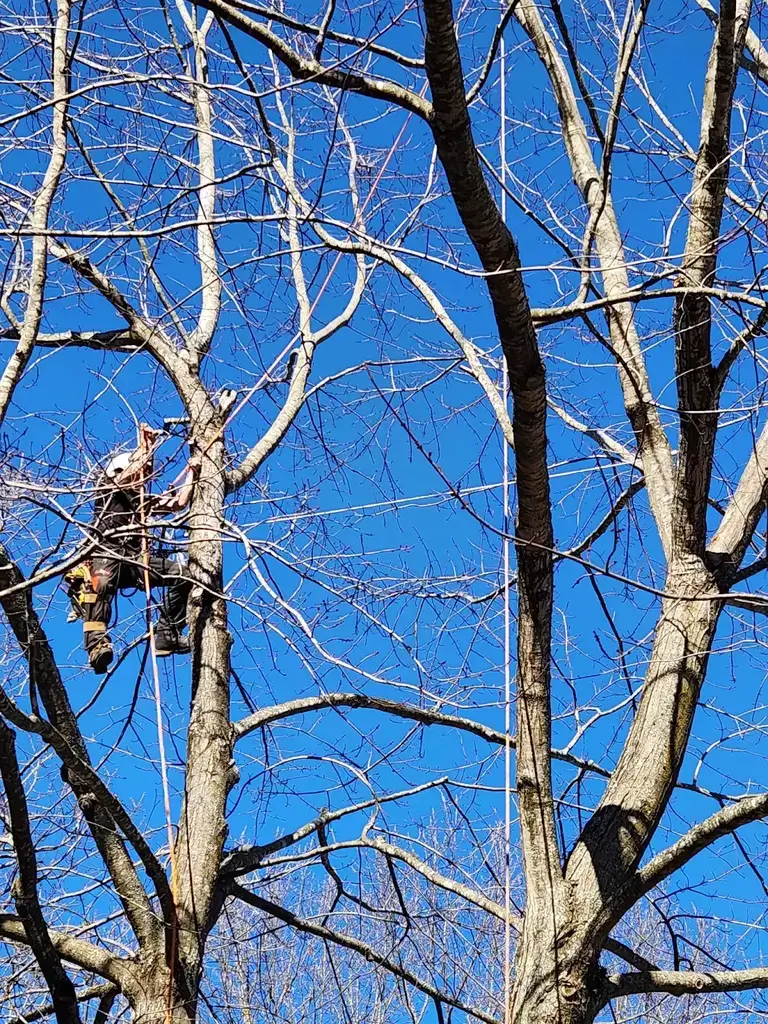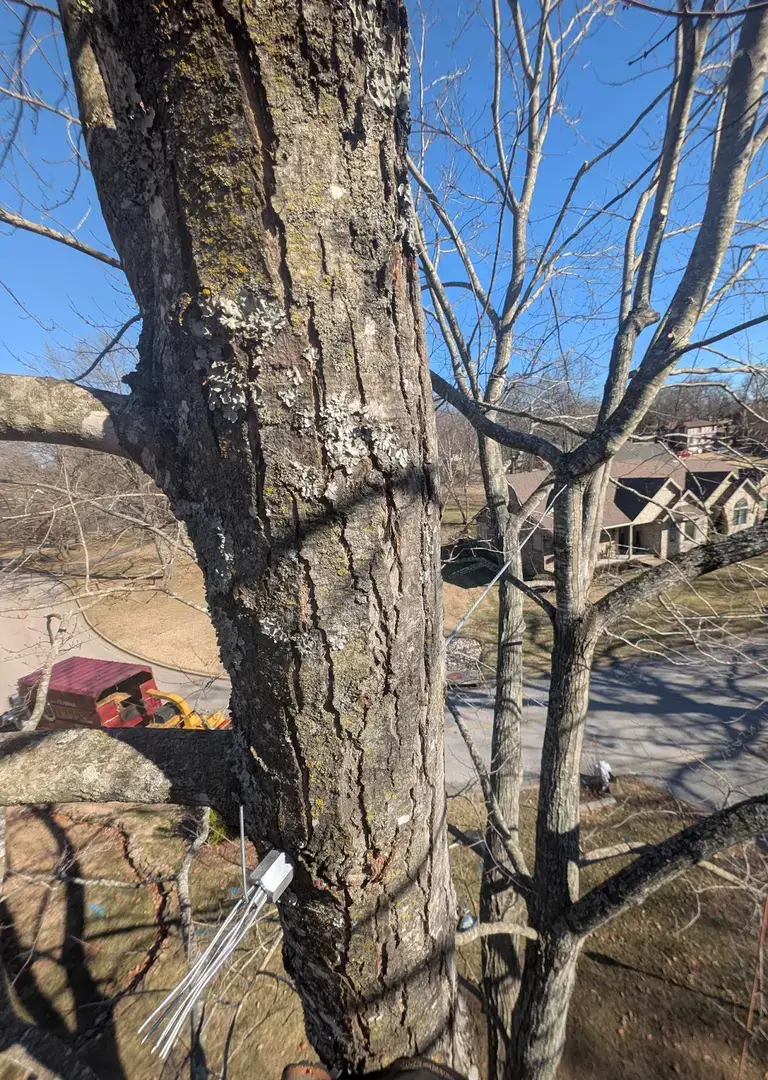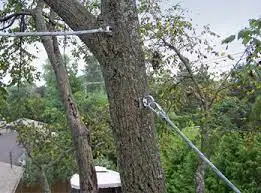Cabling & Bracing
Professional Tree Cabling & Bracing in Springfield, MO
As board certified master arborists, our goal is to ensure the health and safety of your trees, while also providing you with the peace of mind that comes with knowing your property is well-maintained. One of the most crucial and, often overlooked, aspects of tree care is tree cabling and bracing.
Tree cabling and bracing are advanced support systems that give trees the additional reinforcement they need to survive and thrive in challenging urban environments. With All About Trees, you can protect your green companions with professional tree care techniques that preserve their natural structure and mechanical strength.
Contact us to schedule your tree cabling and bracing appointment that provides essential support for your trees today!

What Is Tree Cabling and Bracing?
Tree cabling and bracing are sophisticated support methods designed to provide structural integrity to trees with weak points or overextended branches. They are almost like suspenders for trees. They help distribute weight, reduce stress on critical sections, and prevent potential branch breakage. Our ISA-certified arborists strategically install cables and braces to support vulnerable areas, creating a comprehensive system that protects the tree’s overall health.
When we talk about tree cabling systems, we’re referring to flexible steel cables installed high in the tree’s canopy. These cables connect multiple branches, redistributing weight and reducing the risk of structural failure. Bracing, on the other hand, involves installing rigid support rods through weak or split branches, adding mechanical strength where natural growth might be compromised.


Why Trees Need Additional Support
How These Support Systems Benefit Your Trees


The Tree Cabling and Bracing Process
The process begins with a comprehensive tree inspection. Our certified arborists climb and assess your trees, identifying areas that require additional support. We map out potential weak points, measure branch angles, and develop a customized support plan. Installation involves precise cable placement using specialized equipment, ensuring minimal damage to the tree’s bark and natural growth patterns.
Cables are typically installed near the top of the tree, connecting major limbs to provide balanced support. Bracing rods are strategically inserted through branches or trunk sections that show signs of potential splitting or weakness. These interventions are performed with surgical precision, always prioritizing the tree’s natural growth and health.



